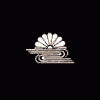I think the term has not a clear definition and we should bear in mind the connotation - as Koichi-san
stated correctly - that a ô-danbira or danbira stands just for a wide/broad blade, because the term
"wakizashi" was yet not in use. So using this term is in my opinion a kind of getting out of the way not
to use an uncommon term for that time and on the other hand, don´t go down to the last detail, i.e.
describing the sword in its function "uchigatana", "koshigatana" and the like.
If I had to make a description, I would probably read as follows:
"Describing a wide/broad bare blade, usually in hira-zukuri, which measures from about the length of
a sunnobi-tantô up to an ô-wakizashi."


